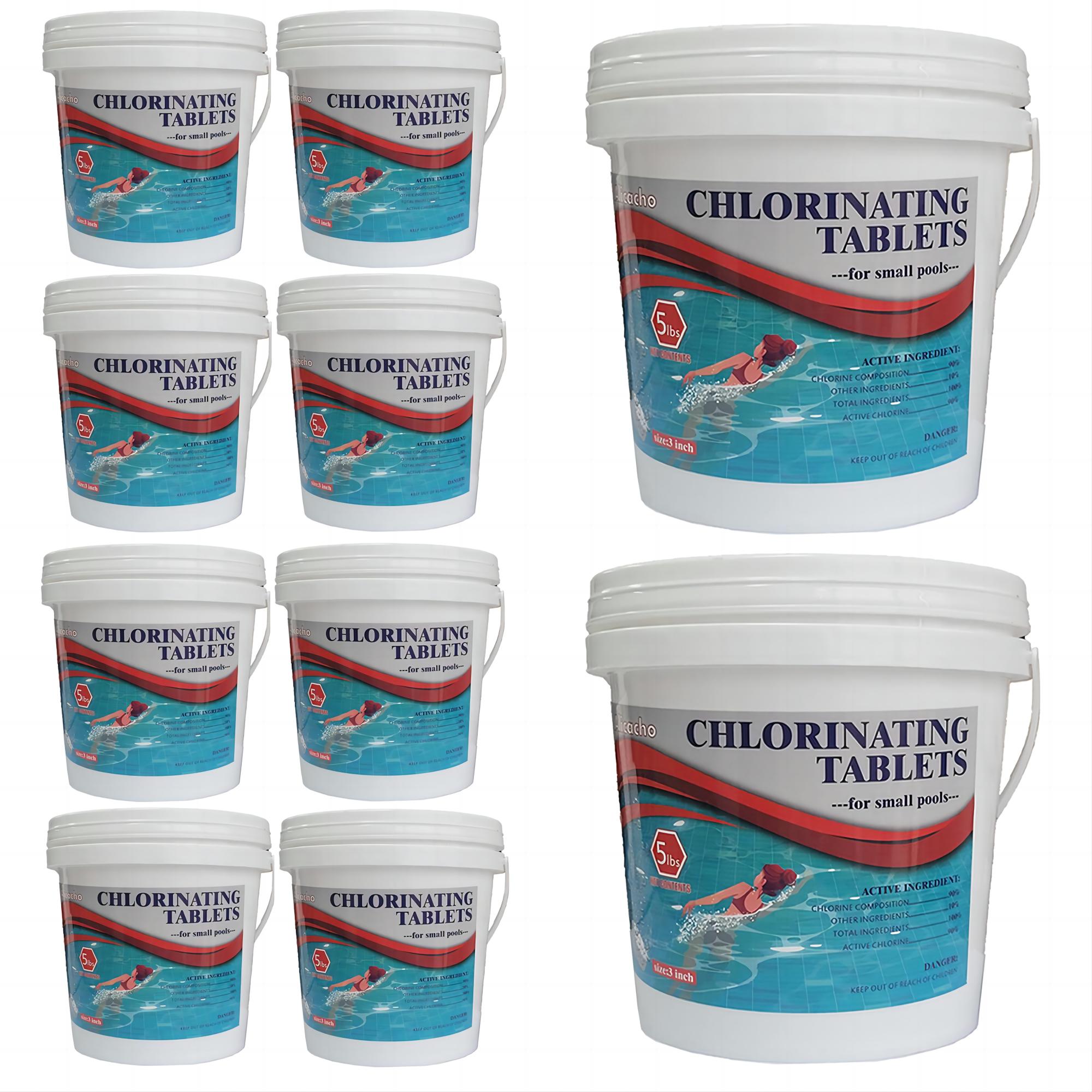One of the several ways to keep a pool sparkling and beautiful from the inside and out is to figure out important things like how to reduce alkalinity in pool water. A low and a high alkalinity can impact the pH level too much and may cause it to be unbalanced. There is a required or recommended level of alkalinity that must be followed, by following such levels it would not be too hard to obtain safe and clean pool water.
There can be possible reasons for high alkalinity, these reasons can result in unbalanced water chemistry which can pose harmful effects on the pool and to the people who use it. Once alkalinity is too high, there are measures that a pool owner can take to obtain the required value and have it jived along with water chemistry as needed.
Part 1. What is the Ideal Alkalinity for a Swimming Pool?
Total alkalinity or alkalinity can be considered as the pool water’s pH buffer. To maintain a consistent pH level is to balance the level of total alkalinity. It is the measurement of the alkaline salts in your water and the ability of these alkaline salts to neutralize acids.
The ideal pH level that must be obtained in pools is between 7.4 and 7.6 ppm. If there is a case that your pH level becomes too high or too low than the given range, water chemistry will be surely compromised. Once it happens, your pool’s equipment may be at risk and it can also highly affect your pool’s ability to sanitize itself.
Examples of alkaline salts are magnesium and calcium, the unit used to express alkalinity is in ppm or mg/l. Once you have made sure that you have complete control over water alkalinity, or you know how to reduce alkalinity in pool water once it is too high, it can also be assured that chlorine will function well in disinfecting your pool water.
The ideal or recommended range of alkalinity in your pool water is between 100 and 150 ppm. This range must be observed to maintain water chemistry as needed. Once there is a variance in the level of alkalinity or it has become higher than 150 ppm, pool water can be cloudy and the pH will be too high. On the other hand, once the pH is too low, it can make the pH unstable.

Part 2. What Causes High Total Alkalinity?
Before we get into the different tips on how to reduce alkalinity in pool water, it is better to know the root cause and analyze each. Once all possible causes are properly figured out, it would be easier to devise methods that could influence the value of alkalinity as needed for pool health maintenance.
There can be a lot of possible causes of high alkalinity, such as too much pool chemicals, high bather load, and lower chlorine levels.
Sanitizer Levels Are Too Low
One of the important factors that can affect alkalinity levels and pH is when there is a high bather load and the chlorine level is also high. Once there are low chlorine levels, and there are many swimmers in your pool, water contaminants can be left behind and may disrupt pH. Once pH is disrupted, total alkalinity may also be affected.
Cyanuric Acid
CYA or Cyanuric acid is a chlorine stabilizer and is one of the most common chemicals that can raise total alkalinity. This chemical stabilizes the chlorine and prevents it from being evaporated because of the UV rays of the sun. Chlorine may also cause acidity and CYA can also act as a buffer. It is important to test your pool water regularly to maintain proper pool water chemistry using test strips or test kits.
Pool Shock
When you shock your pool, it can also cause high alkalinity levels. Although it is important to have a regular pool shock schedule, chlorine-based pool shocks have high alkalinity and will increase pH. So, it is normal to have high alkalinity and pH after pool shock.
Aside from the ones that we have enumerated and defined above, there are other factors such as:
- Presence of chemicals from bathers such as sun creams, lotions, residues, and human sweat.
- When there is incorrect use of pool chemicals.
- Poor filtering system or system issues that may affect operation.
- Water volume changes because of evaporation, which also causes the concentration of calcium carbonate.
- Contacts with carbonate rocks.
Once there is high alkalinity uncontrolled increase in pH, possible eye, skin, and throat irritation for swimmers, cloudy water, and damage in pool accessories and equipment such as scaling in the pool walls may be experienced. It may also lead to a decrease in the effectiveness of chlorine and other disinfection chemicals that are used in the pool. These possible effects are the reasons why it is the possible methods to lower it in the next part of the article.

Part 3. How to Reduce Alkalinity in Pool Water?
Now, it is time to figure out the different procedures on how to reduce alkalinity in pool water. These are important procedures to avoid negative consequences on happening. On the other hand, it must not be lowered too much as well, as it can also pose an effect on pool water chemistry. If the alkalinity in your pool is too low, you can see this post to know how to increase it.
One of the ideal ways how to reduce alkalinity in pool water is to use muriatic acid. It is a form of hydrochloric acid which is said to be strong and corrosive. It is readily available anywhere and can be bought in pool supply stores, hardware, and even in home supply stores. But, how can we lower or reduce alkalinity in pool water using muriatic acid?
- Step 1. Initially, you have to turn off the pump of your pool. It is needed that your pool water is stable and not moving. You have to make sure that pool water has settled down, you can wait an hour to make it happen. Once pool water aerates, alkalinity may be raised, and it can be caused by movement in the pool water. Once it is made sure that pool water is stable and, at the standstill, then it can be a great opportunity to lower pool alkalinity level.
- Step 2. Before proceeding further, it must be made sure that all the directions from the chemical bottle are read and understood. It is necessary since application depends on the type of chemicals that you will be applying to your pool. It may also indicate the proper doses based on the size of your pool. You can also measure the total alkalinity level and have it compared to the required amount to be added based on pool size to avoid overdosing.
- Step 3. Chemicals in general are dangerous once mishandled, and muriatic acid is no exception. To make sure that the pool application will be safe, it is a must to always read the manufacturer’s label or directions for usage and utilization. Some variants of muriatic acid may require you to dilute it first into water before pouring it into the pool water, while some products will just let you put it directly. It is also advisable to have proper clothing during the application and use protective equipment such as goggles, gloves, and a face shield.
- Step 4. Now, you can start pouring the product into your pool water. Some intend to pour it into the deepest area of the pool, and once poured down, you have to wait until it has settled down, an hour would probably do. This is to make sure that enough chance was given for the muriatic acid to properly aerate, which is a huge help to lower the alkalinity level of your pool.
- Step 5. Then, you can now turn on your pool’s pump once natural aeration has taken place or after an hour. You have to run it for a couple of hours for the muriatic acid to spread its way to your entire pool.
- Step 6. Once you have applied muriatic acid for several hours, you can start testing the chemical levels of your pool water. You have to make sure that you test pH and total alkalinity levels to see the expected progress of lowering down alkalinity level. In case you have not reached the required level, you can always start from the initial step until the recommended or required alkalinity levels are achieved. One of the keys that can be considered in making this a success, is to apply patience at all times.
There are other pH reducers and acidic compounds that you can use on how to reduce alkalinity in pool water. There can be different forms of it such as liquid, tablet, and even powder forms. The principle of using these chemicals and compounds is when their acidic properties react with bicarbonate or carbonated alkalinity and produce carbon dioxide, it will expel the said carbon that causes high alkalinity in the gas form.
In case the calcium carbonate scale has been developed, you can use weak acid solutions like acetic acid, and you have to make sure that you have an empty pol before proceeding with this one.
In case you have decided to use muriatic acid, it has been a rule of thumb to use 25.6 ounces of full-strength muriatic acid to reduce the high alkalinity of a 10,000-gallon pool by 10 parts per million. You can also use sodium bisulfate, in case you are looking for an alternative. It also functions same as the muriatic acid, except that it is safer and more expensive. There is also a need for you to find a dry place away from moisture to properly store stocks of it.
Part 4. FAQs
1. Does Baking Soda Lower Alkalinity in a Pool?
If you know that sodium bicarbonate is a natural alkaline, then you also know that baking soda can help you raise the alkalinity of your pool as they are only one. It has a pH of 8 ppm, and once you have added it to your pool water, an increase in the pH and total alkalinity levels may be observed. So, baking soda does not help you lower the alkalinity of your pool.
2. How Can I Lower Alkalinity without Lowering PH?
If you want to achieve lower alkalinity without lowering the pH, you have to an acid to your pool. You have to make sure that water is aerated to raise the pH while alkalinity is not being affected.
3. What Happens if Pool Alkalinity is Too High?
Once the alkalinity of your pool is too high, it can cause cloudy water, eyes, skin, ears, and throat irritation, an increase in pH that can’t be controlled, damage to pool accessories and equipment, and even scaling on the walls of your pool. It also decreases the effect of chlorine as a disinfectant to your pool, and may also pose effects to the use of other disinfectant products or treatments. It may also pose hazards to swimmers in case of accidental drinking and prolonged swimming hours.
4. Can I Use Vinegar to Lower Alkalinity in the Pool?
Aside from the chemicals that you can use to lower the alkalinity in pools, you can also use vinegar to lower it. The use of vinegar in pools can also help avoid scaling in pool accessories, walls, equipment, and other pool water problems. It may not be the most effective one that you can use to treat high alkalinity in your pool water, you may need to add so much of it to your pool water that it may result in a sugar level increase to become food for microbes.



